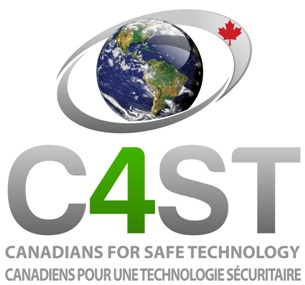For cellphone tower opponents, safety is the key issue
- 0 Comments
The 13,000 cellphone towers in Canada will increase because “Canadians are leading the world in smartphone adoption, they use lots of bandwidth and you must have the infrastructure,” said Marc Choma, director of communication for the Canadian Wireless Telecommunications Association (CWTA).
As more communities across the country protest against their installation, a protocol was recently devised by the CWTA and Canadian municipalities making it necessary to consult communities — even for cell towers shorter than 14.9 metres.
“Any installation, regardless of what height, if the community is asking for a consultation, there would be consultation. … This is everything a community would be looking for,” Choma said.
Although wireless technology is accessible to 99 per cent of the population, increased video usage needs more bandwidth, he said.
“Industry Canada is looking at expanding to rural areas. … We feel there is going to be more infrastructure required and we want to increase capacity. The infrastructure has to come closer to homes.”
Safety standards, Choma pointed out, are set by Health Canada and enforced by Industry Canada.
Those very safety standards are the rallying point for many protests, said Frank Clegg, CEO of the advocacy group, Citizens 4 Safe Technology (C4ST). Across Alberta, British Columbia, Ontario and Quebec, the group has logged more than a dozen battles against cellphone tower installations.
Health Canada’s directive on radio-frequency emissions states that human exposure is safe from 3 kHz to 300 GHz while limited to six minutes, meaning cell towers are not considered a danger to humans. Because of this, Industry Canada will not accept health issues as an argument against cell towers, said Clegg, who was president of Microsoft Canada for 15 years.
This directive, Health Canada Safety Code 6, hasn’t been updated since the 1980s, Clegg said, and ignores increasing scientific research from around the world warning that exposure has other effects besides thermal — it can cause cellular change in humans. These standards are inadequate, Clegg said, and cannot protect against wireless radiation from cell towers, Wi-Fi in schools, the new “smart” meters (being installed by Hydro-Québec).
While Health Canada has admitted that more research is needed, it continues to use these standards, while countries like Russia, China, Italy and Switzerland all have regulations 100 times more stringent than Safety Code 6, Clegg said. “Canada’s number is 10 million microwatts per metre squared and those other countries allow 100,000 microwatts per metre squared.” The Toronto Star recently reported that Toronto public health “has also urged Health Canada to take a more conservative approach to cell towers and reduce the radio-frequency levels from the installations to 100 times below current guidelines.”
While Health Canada reviews the code every few years, it continues to dismiss all the evidence of biological effects, Clegg said, while acknowledging that “some (limited) data exist that suggest radio-frequency energy might cause cancer.”
In 2011, Clegg pointed out, the World Health Organization’s International Agency for Research on Cancer classified electromagnetic fields as possibly carcinogenic to humans. “This is classification 2B, like lead and DDT (an insecticide), yet Health Canada is doing nothing about wireless radiation,” he said. “I’ll be polite. I think they’re behind in evaluating the science. And industry confuses the data, hires people to attack the science.”
The most troubling aspect is how this might affect young children. Last month, Conservative MP Terrance Young of Oakville, Ont., stood up in Parliament to commend the work done by students at Westwind Montessori Junior High who, realizing that children are more at risk for wireless radiation, decided to take Wi-Fi out of their school.
“Even Health Canada has asked parents to keep cellphones away from kids,” Clegg said. “We should exercise caution, especially with children.”
